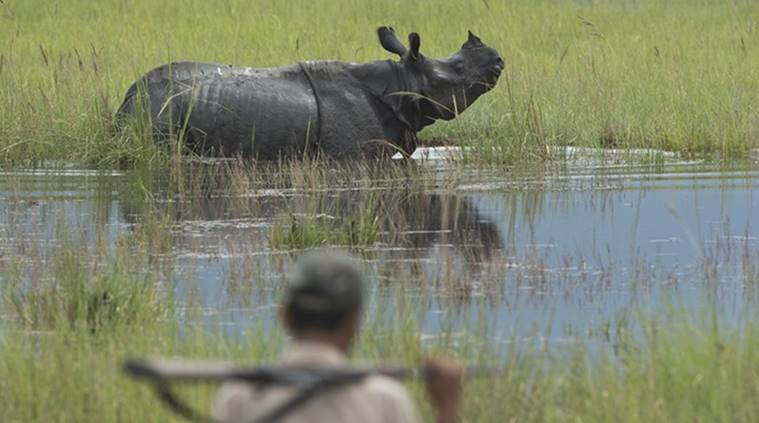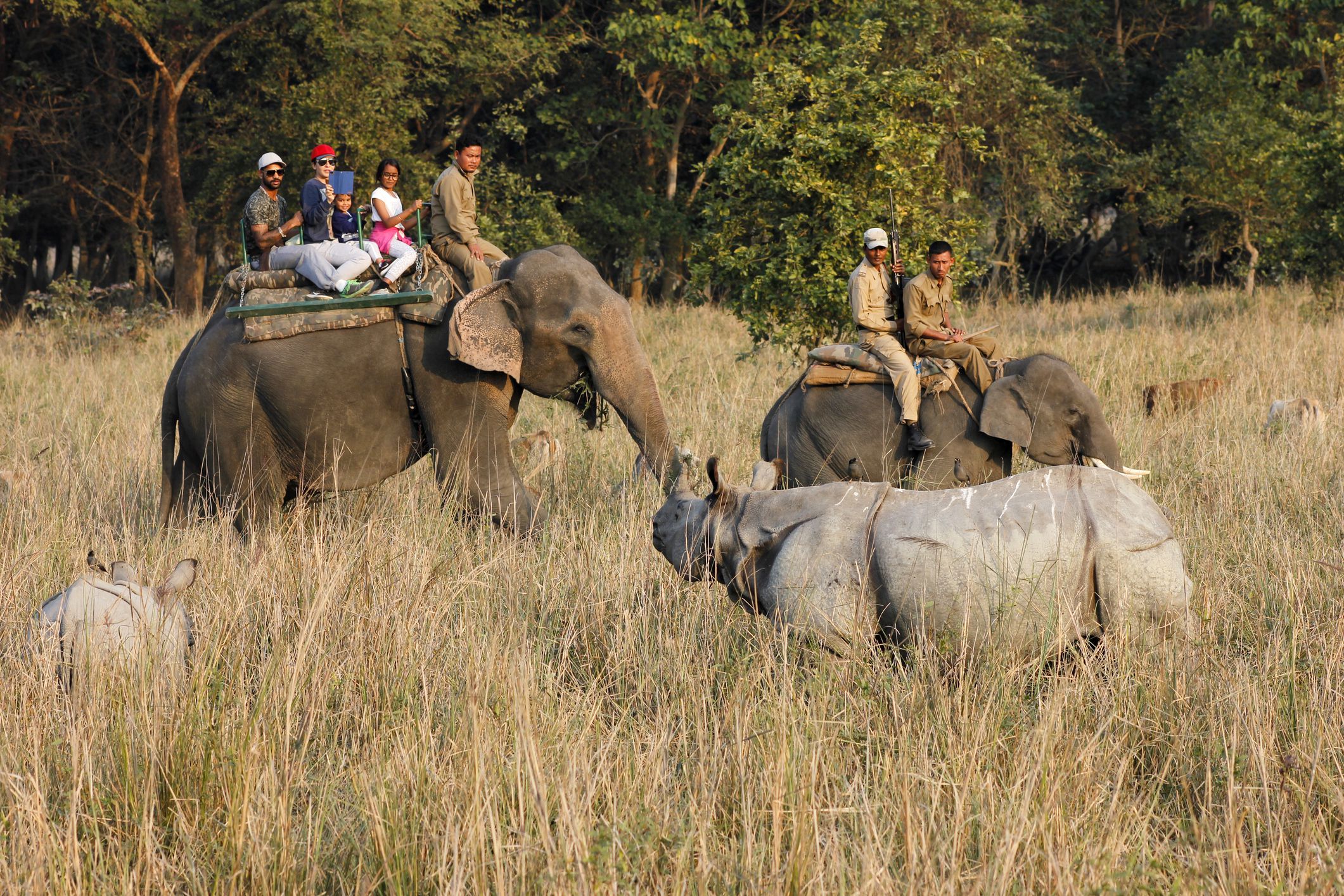Assam's Wildlife is DROWNING
Posted on July 20th, 2020

Thinking of North-East India always brings in the serene and unparalleled natural beauty but when it comes to natural calamities, they are totally ignored!
Assam floods every year and yet we are unable to minimize its impact. The Brahmaputra River which flows from China down to India and then through Bangladesh, has burst its banks after torrential monsoon rains, swamping more than 2,500 villages in India’s Assam state over the past two weeks. The photos and videos that surfaced online is just the tip of the iceberg.
The monsoon floods that claimed over 100 human lives and displaced millions in India’s northeastern states, has also ravaged Kaziranga National Park (KNP) and other protected areas, killing close to 200 of its animals. As many as 1400 forest department personnel alongside 300 to 400 people from nearby villages and NGOs are dedicatedly battling nature’s fury to provide a haven for the affected animals. So far, 64 animals have been rescued in Kaziranga. District authorities imposed restrictions (Section 144 of the Indian Penal Code) on vehicular movement along the national highway, to shield wild animals from traffic while escaping from the inundated forest swathes. These animals might be undergoing both physical and physiological stress. Many may be under nutritional stress as food might not be available easily.
The Kaziranga National Park and Tiger Reserve (KNP/KTR) located in the northeastern state of Assam, is sandwiched between the Brahmaputra River in the north and the Karbi Anglong hills in the extreme south
During the fierce monsoons, when the Brahmaputra bursts its banks and floods Kaziranga’s grasslands, Karbi Anglong serves as a refuge for the wildlife that migrates over to the hills. The landscape connectivity between Kaziranga and the Karbi Anglong hills is crucial for the survival of animals there.

Unfortunately, commercial activities on or close to the animal corridors have forced the animals to take unconventional monsoon migration paths over the years. Human population in the peripheries now sees increasing man-animal conflicts. In an incident, a Rhino strayed out of the park. Later he was moved back into the park. Incident like these are common since the onset of floods.
Stone quarrying and mining in Karbi Anglong over 15-16 years has virtually blocked some of the corridors, preventing animals from moving higher into the hills. This makes them vulnerable to poachers too. They also face increasing danger of being hit by vehicles if they take refuge on roads that often run along embankments.
Within the park, 144 artificial highlands were created for the animals and construction of these new highlands by the forest department inside the park has somehow helped the animals to take refuge there but ecologically, these highlands are not a great invention.
Neglected siblings
While Kaziranga’s plight is deservedly getting a lot of attention, there is not much noise on the condition of some of the other major protected areas of Assam like Orang, Manas, Pobitora and Dibru Saikhowa.

Pobitora Wildlife Sanctuary, known for having one of the highest densities of one-horned rhinoceros in the world, is also reeling under floods. It is located in Morigaon, which is one of the worst flood-hit districts this year. A large portion of Dibru Saikhowa is flooded.
The park is a floodplain and is submerged every year but unlike Kaziranga, it doesn’t have highlands where animals can take shelter. The park is also grappling with the shortage of manpower.
Floods - Blessings in disguise?

Even though Kaziranga and its nearby areas lose a sizeable chunk of its biodiversity to the floods every year, experts and forest officials consider the event as a ‘necessary evil.’ Floods are essential for the smooth functioning of the park’s ecology.
The park won’t survive without the floods – they replenish the wetlands and grasslands and the water, most importantly, helps drain out the aquatic weeds that would otherwise choke the water bodies. Removing these weeds manually would be exhaustive in terms of both resources and manpower.
However, since time immemorial, on occurrence of such flood like situations the animals used to gravitate towards safer, higher ground i.e. nearby Karbi Anglong hills area. With the increased human population in the adjacent areas and sudden release of dam waters during monsoon animals now have less time to interpret the rise in water level.
So Animals tend to cross the National highway which cuts across the park which is a shorter route for them but this leads to mishap as animals that venture out of the park are killed either by over speeding vehicles or by poachers.
Conclusion
So clearly, it’s not the flooding that’s the problem. The biggest problem is the construction and increasing human presence along the area. The animals of have lost their traditional high land place to these human settlements. Overall, an integrated and deterministic policy involving all the stakeholders is required.
Kaziranga along with other protected areas have two-third of the one horned rhino population in the world and if we don’t act fast, we may lose the park in the next 50 years.
We need to be more proactive rather than being just a periodic bubble.


